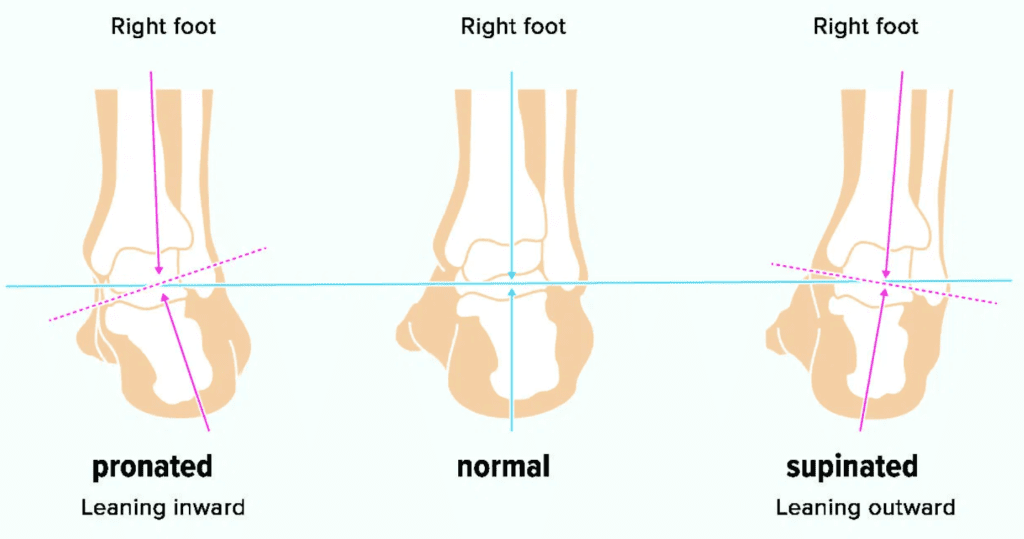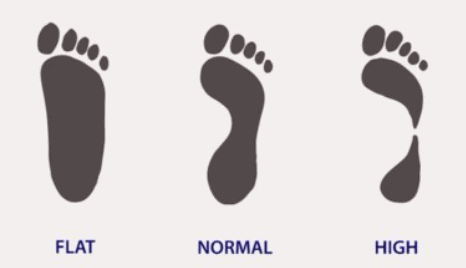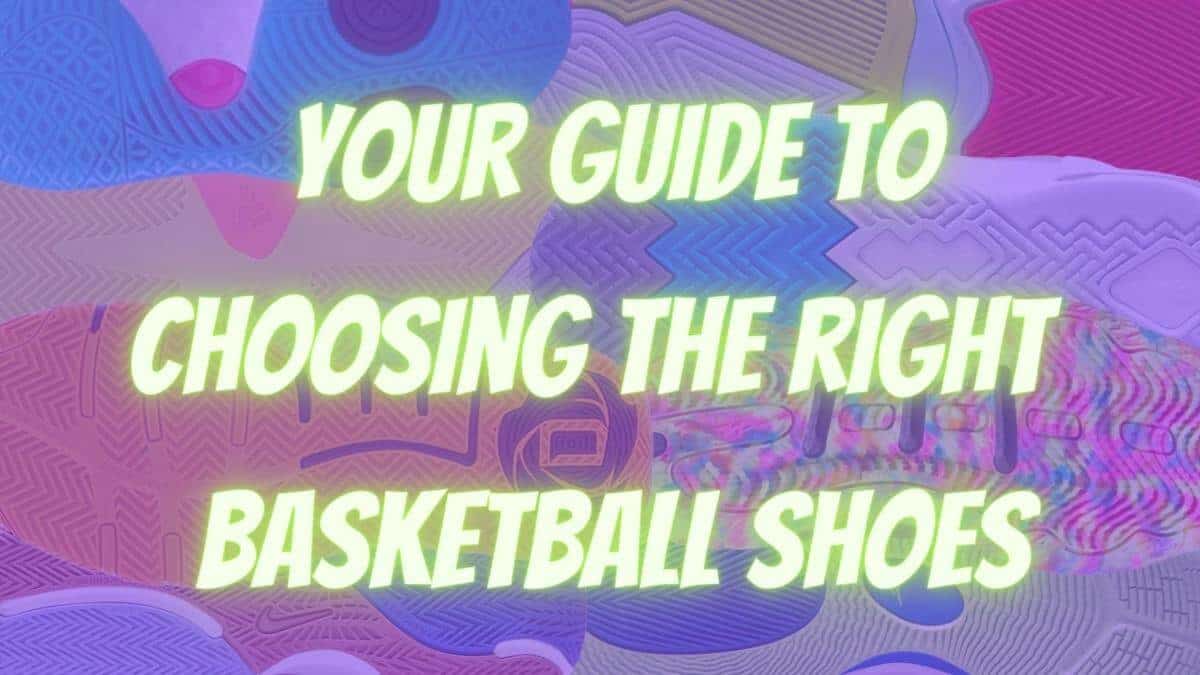Finding the right basketball shoes for your specific needs can have a huge impact on your performance, comfort and safety on the court. It’s a simple fact, finding the right basketball shoes for you is going to help you play better and safer basketball.
Basketball is one of the safest team sports, but it’s also a leading cause of youth sports-related injuries. And most basketball injuries affect the ankles and knees. Finding the right basketball shoes is one of the most effective ways to reduce your risk of basketball-related injury.
But it can be a little tricky. There are a ton of different basketball shoes on the market today. Sorting through them all can be daunting. But if you understand what you’re looking for, the task becomes a lot easier.
So let’s talk about how to choose the right basketball shoes for your anatomy and playing style. Honestly, it’s a little more complicated than it should be, but I’ll walk you through the process.
Basketball Shoe Sizing
Finding the right basketball shoe sizing is a little more important than finding the right sizing for more casual foot wear. The margin for error is greatly reduced when you’re planning to run, jump and change direction at your athletic limits.
If your basketball shoes are too tight in the wrong spots, you’re feet will blister. If your basketball shoes are too loose, you’ll be floating around in them. You’ll want to make sure that your feet are snug, but comfortable.

So let’s start by measuring your feet correctly. You know those metal contraptions at the shoe store? Yeah, I never cared about those until I started hooping. But when we’re talking about jumping and cornering performance, the overall shape of your foot becomes much more important.
So start by getting some current and accurate measurements of your feet. Collect length and width measurements for both feet. You probably don’t have one of those metal foot measurer thingies, but if you have a pen, a sheet of paper, and a ruler, just follow this process…
- Outline your foot on a piece of paper.
- Draw a rectangle that fits your foot.
- The length length and width of the rectangle are roughly what you are looking for in terms of shoe size and width.
Having your measurements is going to help narrow down your selection. Unfortunately, it ends up being a real challenge to figure out what shoes have what dimensions.
Take Nike, the obvious leader in basketball footwear. The majority of NBA players and hoopers in general, wear Nike shoes. Nike sizes their shoes only in length. Some models have options for wider feet, but Nike doesn’t really give you a way to even find those models. And most of the other brands follow suit.
So if you have narrow or wide feet, you’re kinda just stuck hunting for shoes with a wider natural sizing or with a wide option.
Now, there’s one important measurement we’ve ignored up until now. This is pronation. Pronation refers to how your ankle is postured and it affects whether you have high or low arches.

If your ankle tends to tilt further inward, you will have flat feet. If it tilts outward, you will have higher arches. Both of these issues can make you more susceptible to ankle injuries.
You can easily check your own pronation by examining your footprints. Ideally, you would just dunk your feet in water and step on a dry slab of stone or concrete. You can then simply compare your footprint to this image.

If you have flat feet or high arches, you’ll want to look into insoles, perhaps even custom orthotics depending on the severity of the issue. I’d also recommend choosing a higher upper to give yourself a little more ankle support.
How to Choose the Right Basketball Shoes for Your Playing Style
Now that we’ve evaluated the shape of your foot, we have a solid base of information to work from. The next detail to look at, is how exactly you plan to use your shoes.
Your preferred style of play can determine a lot about the style of shoe you want to target. A key rule-of-thumb is to find a pro who plays the same position as you, or has a similar build, and find their favorite shoes. But we can go into a little more detail.
Indoor vs. Outdoor
Most basketball shoes, especially in the US, are optimized for indoor use. It makes sense, but it is frustrating if you play outdoors a lot (like myself). Ideally, you don’t want to wear the same shoes on both asphalt and hardwood.
BTW, I do have a whole post about finding good outdoor basketball shoes, so check that out if your a fresh air hooper.
The main feature that determines whether a shoe is ideal for indoor or outdoor play is the tread. A harder rubber with less detailed features is better for outdoor surfaces. A soft, grippy rubber with fine, fingerprint-like ridges is better for hardwood.
So you can generally tell by the tread (a.k.a. outsole) if a shoe will hold up outside. Still, I tend to defer to reviews when hunting for an outdoor-specific shoe. Most review sites will at least make an educated guess on whether a shoe will function for outdoor use.
Try to find a reviewer who has used the shoe outdoors though. Chances are, if it is any good on an outdoor court, someone has used it on an outdoor court and written about it.
Basketball Shoes for Guards
Guard play tends to favor quicker, shiftier movements. With that in mind, you’ll want to think about sacrificing a little cushion for lockdown and maneuverability.
So you’re looking for lighter shoes with a lower midsole profile, and often, a low top. The outsole on a good guard shoe tends to splay out a little. Take a look at basically all of the Curry’s ever produced to see what I mean. The soles will often taper outwards to give you a little more surface area to work with on traction.
Basketball Shoes for Forwards and Centers
For the bigs, you’ll want to sacrifice a little maneuverability for support and cushion. This will typically be a mid or high top, and you’ll know the beefy cushioning that’s fit for a big when you see it.
The Anatomy of a Basketball Shoe
As you explore the wide world of basketball shoes, you’re going to see references to the various sections of a shoe. I find this stuff a little boring, but it is essential knowledge if you don’t want to get confused when the shoe experts are talking.
If you’re up on your sneaker techno-babble, you can just skip this section.
Outsole
The outsole is the tread, the part of the shoe that comes in contact with the ground. The outsole is particularly important in basketball shoes because traction is particularly important in basketball. A good outsole allows you to plant your feet and stop on a dime.
Most basketball outsoles are gummy and finely-ridged. This gives you excellent traction on the slick surface of a hardwood basketball court. Off the court, this type of tread collects dust and rocks and wears out quickly. So a good pair of indoor basketball shoes should be used only on a clean indoor court.
You can find models that use a burlier outsole pattern and harder rubbers. These will stand up better to regular use, or use on outdoor courts. Some brands have a proprietary hard rubber that designates a more durable outsole. Nike calls theirs ‘XDR’.
Durable outsoles tend to be far more common in Asian brands like Li-Ning or Anta. Supposedly outdoor play is more common in Asia. But I think it’s also just an issue of practicality. A ton of American shoe models are built, at least in some regard, to the specs put forth by a player. Players aren’t playing on hard top.
Midsole
The midsole is that cushion of material between the outsole and the upper. this section brings all of the shock absorption properties to your basketball shoes.
The midsole is usually made of EVA or polyurethane. There are all kinds of proprietary products that companies will put in their midsoles, but they’re usually just proprietary versions of EVA or polyurethane. Some shoes will have some type of hard insert to offer a little more rigidity to the shoe.
If your feet are getting beat up from all of the pounding, the midsole should be of concern to you. A luxurious midsole can be a real benefit for larger players who are making a lot of vertical movements.
Insole
Alright, insoles are those little flaps that you can pull out of your shoes. The insoles that come with your shoes are usually going to be kinda lame, but they’ll work for the average foot.
Where insoles get interesting is when you’re looking to fine tune the fit of your shoes. A custom orthotic can address issues with pronation, add some shock absorption, and really just get you locked into your shoes. But that’s a whole post in itself.
Upper
The upper is everything above the sole. You know, that fabric part with the lace holes and everything. Chief concerns here are breathability and durability. If you get sweaty feet, you’re probably going to want to sacrifice a little durability for air flow.
You’ll mostly be reliant on the basketball shoe databases to determine what shoes are more breathable vs. more durable. Compare durability reviews across multiple sites to find what works for you. But you can also reference the materials. Leather is certainly very durable. Fine mesh is less durable.
Navigating the Basketball Shoe Landscape to Choose the Perfect Basketball Shoe
Once you’ve nailed down your foot size and your style of play, its time to look to the databases. This is the real challenging part where you take everything you know about yourself, including your own very personal sense of style, and use it to filter out the perfect shoe.
There are a bunch of sites out there that collect and organize shoe data. They are not all built alike. Unfortunately, you will probably end up having to cross-reference several resources if you want to get clear expectations from a specific shoe model.
Here are some of my favorite resources. Each of these offers some unique benefit. Keep in mind that reviews are always subjective. You can tell because you will often see wildly different reviews for the same shoe on different sites.
- The BBAllShoes spreadsheet – This is a spreadsheet someone put together that lists a ton of basketball shoes with their size, pricing and performance attributes. I don’t find the ratings to be very reliable, but the sizing information is very helpful.
- HoopsGeek – This site has an extensive dataset and their reviews are a little more reliable. The interface is clear, you can quickly check if a shoe is performant in the areas you need it to be, and the data is usually reliable.
- WearTesters – These guys have extensive video reviews. So when I’ve narrowed it down to maybe 2 or 3 pairs, I like to compare the WearTesters videos on those models. This is that one final review from a reliable source.
- KixStats – If you’re interested in finding which shoes are worn by your favorite players, this site helps with that. If there’s a player who fits your playing style, you should definitely look into the shoes they wear. Just make sure that the sizing of their shoe model fits your foot. Don’t pick a shoe only because you idolize a player, but it can be an added incentive.
Basketball Shoe Brands and Where they Shine
Nike
Nike is the undisputed king of the basketball shoe world. Take a look at the average NBA court and you will have no trouble finding the swoosh.
But they are also a somewhat generic option. Being the Goliath gives you the luxury of being able to focus on the largest demographics. If your foot shape or play style differs from the norm, you may well find a less dominant company competing for your specific needs.
And quality Nikes are often on the more expensive side. You can find cheap Nike basketball shoes, but you’ll likely get a little more performance for your dollar from other brands.
Under Armour
The Steph Curry brand. If you idolize Curry, as very many do, you will be drawn to the Under Armour brand. And they make a solid shoe. The Curry’s are a reliably high-quality guard shoe.
Puma
For the no-nonsense hooper, Puma drives a fantastic value prop. They make some cool little kicks that offer competitive performance. They do focus on the low top market though. So, if you’re in the front court, you might be more interested in the other no-nonsense brands, New Balance.
New Balance
New Balance also offers some great performance and they are historically well-reviewed. But they tend to offer lines with a lot more ankle support than Pumas.
Converse
The OG hooper shoe. These days we all look back and wonder how on earth anyone was able to throw down in Chucks. Converse still makes basketball shoes, and with a lot more support and comfort than the OG Chucks. But their real hits in the basketball market are a little few and far between.
Li-Ning
With the Way f Wade line, Li-Ning is the clear leader of the Chinese hooper market. And these are certainly a legit contender. They have a wide catalog, and a unique style. They appeal to sneakerheads, and for a true street hooper, Li-Nings are top of the line.
However, these things tend to be some of the most expensive basketball shoes out there. They are true imports, and while they are pretty flashy, I don’t personally feel like rocking these on an outdoor court that’s going to trash them in no time.
Adidas
Adidas does a great job of gobbling up those pro hoopers who just hover right below legendary status. These are the dudes with the love and the following, and the HOF legacies, but who are decidedly un GOATsmanlike.
Still, they make good shoes, and if you fall in as a fan of one of their signature holders, you would be perfectly fine picking up a pair of their Adidas representatives.
And1
Certainly a staple, historically, with the street baller crowd. Unfortunately, the brand has mostly dropped into this weird niche where they don’t quite deliver the performance to live up to the price. Like, the attack line seems well-reviewed, but they are expensive, and IMHO kinda ugly.
Reebok
Legendary, but the legend has fallen off. You can still snag some of the great models of the past, but you’re probably better served by looking into some newer stuff.
Anta
Another of the Chinese brands. So again, you have some cool outdoor options. And Anta runs the signature shoe for the other half of the splash brothers, Klay Thompson. So if you can get into shelling out for the lesser splashers Chinese signature model, you’ve found your shoe.
361°
This brand is kinda interesting. Another Chinese brand, so there’s a bit of that import premium. But 361° runs the Arron Gordon line. And his signature is pretty nice, with a bunch of interesting colorways and regularly decent reviews. Plus, they’re not as expensive as the Li-Nings tend to get.
Peak
This is one of the lower totems on the Chinese Pole. They run signatures for both Andrew Wiggins and Spencer Dinwiddie. This may have just been an educated guess that one of those guys may, at some point, have to, “learn Chinese, buddy”.
Asics
Asics!? Yeah, they do make basketball shoes. All of their shoes look the same, so I guess you’re either in or out.
